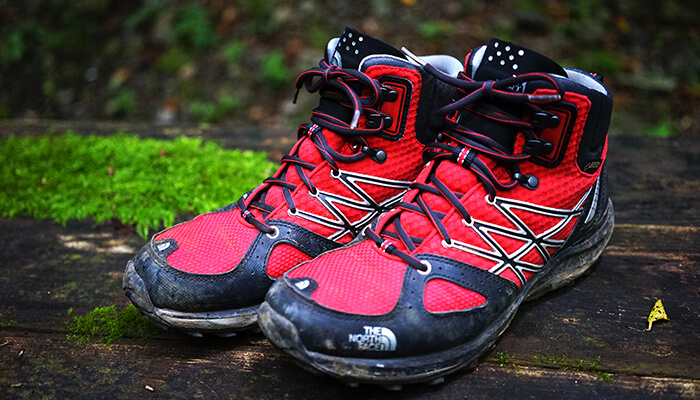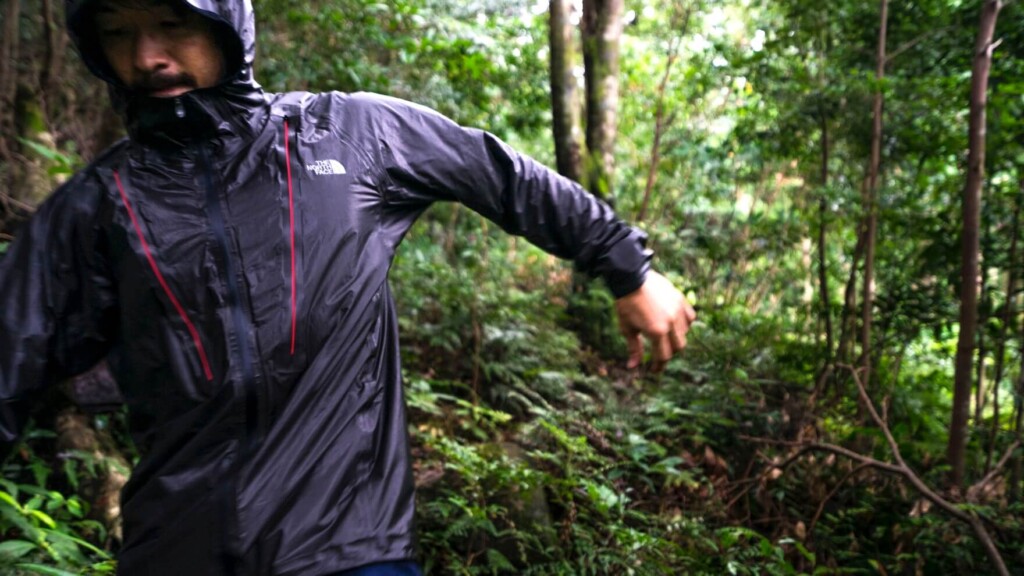table of contents
Introduction: The difficulty of choosing trekking shoes
No matter how much you've been to the outdoors, you won't be able to gain confidence in choosing mountaineering boots no matter how long you go. When we think about why, the first thing that can be thought of is that there are so many options that you can't choose. Spell-like words like "day trips, staying at a hut, staying at a tent, approach, trail running, light alpine, light mountain, mountain, heavy mountain climbing boots, light mountain climbing boots, plastic boots... and so on. What's more, the range of categories shown varies depending on the book and person! If someone who first thought about climbing a mountain as an introduction to this, they would never know what to buy if they were classified in such a strange way.
Another thing I think (maybe it's me) is the kind of resistance to buying light mountain climbing boots due to the trend of "understanding the good points of heavy and sturdy mountain climbing boots = advanced players," which still remains unchanged for some reason. I have no intention of dissing people who regularly use heavy mountain climbing boots or those with healthy legs who use them well. However, from my own experience, I have felt many times that while the traditional leather heavy climbing shoes may be the perfect fit for the climbing style, this does not apply to all mountain climbing, and that shoes are highly rated by the individual's "comfort" and "way of walking". For this reason, I still have a concern that I can't make more freely and choose more flat (scientifically) evaluations.
First impression: "Light and easy to walk" is just
Meanwhile, I was wearing trekking shoes and searching for new shoes, and came across them. Yes, to be honest, at first, I was lying on the ground, saying, "The North Face shoes...the design is impressive, but when I walked around, I guess I'd think they wouldn't be able to compete with a full-fledged shoe manufacturer." However, these specs and design were the very "I'm thinking about the mountain boots," which I had been sympathetic to my mind, so I jumped at the mercy of thinking about it, thinking that I wouldn't be fooled.
To conclude, I'm really sorry for licking it, I have no complaints so far! Rather, I was completely freed from the curse of "being able to wear heavy and sturdy mountain climbing boots that I had been captivated up until now" From now on, it's safe to think, "Light shoes make walking easier → It's easy to walk less tiring and less likely to get hurt!" The feeling you get when you go there is no different from that of sneakers. However, the upper part fits quite firmly and firmly around the ankle, making it very stable. I was also concerned about the stiffness of the sole, but it's a Vibram sole that's impressive. I'm the type who runs down the mountain quite roughly, but I'm completely satisfied with it, not being defeated by the shock.
However, of course, I believe that there are only a limited number of conditions where you can be happy and let go. For now, I'm planning on using this mainly for the mountain hiking period.
- Snowless season (until autumn when there is no need to worry about snow)
- Light weight for day trips or staying at a hut
I wonder. The reasons are as follows.
- Even though it's Vibram, the sole is thin and softer than trekking boots (a genuine one that can even snow) so it looks like snow and rocks will slip.
- I would rather have a flat and stable ground than being able to walk lightly when carrying around a 30kg bag, so I would prefer to wear shoes with a hard sole.
However, it is just that "light and easy to wear" is justified, so I'm sure I'll use these shoes as much as possible.
Additional information: Even trekking shoes can be quite a bit (depending on the person)
Since I was a student when I first started mountain climbing, I had mainly been involved in stream climbing, so I had no connection to what is called leather climbing boots. Since I was a student with little money, Natsuyama survived more than two weeks of training camp in the Japanese Alps with stream shoes and 1,500 yen pseudo trekking shoes I bought at the Olympics. I'm sure it was probably my youth and mere fortune, but I'm sure I didn't feel any inconvenience when it came to walking. Meanwhile, Mr. Y, a classmate from a high school mountain club, carried heavy leather climbing boots even when he approached and climbed streams, which he only used for descents. He says that there is a different sense of stability and security. From this experience, I have thought in my mind that when walking on a mountain trail in the summer, shoes that I believe are easier to walk than differences in function and performance, may be the best.
Detailed review
Comfort ★★★★
I've tried walking around the mountains with these shoes many times, but I've never had any unnatural hit or blisters on my feet. Just as you can see, it feels like you're wearing sneakers with a very solid sole. The lightness of the product will completely free you from the feeling of fatigue. Of course, it's not too hot even if it's a rainy day with Gore-Tex.
Stability ★★★★
While it feels like a sneaker, the sole of these shoes is Vibram, so you will never forget the feeling of your feet firmly on a flat surface. That's why I didn't slip particularly smoothly when climbing and descending like regular sneakers. It is assumed that the size is correct, but as long as you keep it tight from bottom to top when descending, your feet will not slip inside your shoes. It's a sense of stability that requires no worries at all. However, this applies to any shoe, but be careful as it will swell if you place your feet on a damp, mossy fallen tree or root.
Stepping in ★★
Generally, mountaineering boots with heavy weights have a straight, flat sole, and the ankles are firmly fixed, allowing you to step firmly on climbing slopes, or to put your weight on your toes against small footsteps on rocky areas. In other words, it is possible to put enough weight on your feet when stepping on, and in this sense it may be difficult to find a way to easily convey your strength when stepping on. However, if you are on a low mountain range for a day trip or one night, such a harsh situation is not often lasting for a long time. It can be said that it performs better than soft shoes for trail running.
Weight ★★★★★
800g for two feet on both sides! Although trekking shoes have become lighter in recent years, they are generally around 600g per shoe, so there's nothing to say.
Waterproof ★★★★
Gore-Tex is no problem. I've been using it for several months now, but the stitching is also sturdy so it hasn't been weak enough to seep through the seams.
Durability ★★★
I only used these shoes for three months, for a total of about a week, but it's not particularly prone to breakage. It is made of a material that is resistant to scratches, so it can be used without any problems even in hard environments. However, even so, it is a mesh-like nylon fabric like sneakers, so it is weak against hard, sharp objects such as pointy rocks, so after wearing it about 10 times, I started to see some fraying of the fabric, even though it was just a little bit of walking.
evaluation
| item | evaluation |
|---|---|
| Brand name | THE NORTH FACE |
| Item name | Ultra Fast Pack Mid GORE-TEX (Men's) |
| Reference price | 20,520 yen |
| Strong Points | Ultra-lightweight, waterproof, breathable, and fast hiking compatible |
| Cons | Durability and stepping power |
| Recommended usage |
|
| Comfort rating | ★★★★★ |
| Stability assessment | ★★★★☆ |
| Introduction evaluation | ★★☆☆☆ |
| Weight rating | ★★★★★ |
| Waterproofing evaluation | ★★★★☆ |
| Durability assessment | ★★★☆☆ |
Specification table
| item | Contents |
|---|---|
| weight | 800g (400g x 2) |
| type | Lightweight middle cut hiking |
| material | <Upper> Gore-Tex (R) Membrane Synthetic Leather & Mesh Upper TPU Side Support |
| waterproof | GORE-TEX |
| Last Board/Shank | Pebax(R) shank & snake plate TPU CRADLE heel stability |
| Midsole | Compression molded EVA CRADLE GUIDE midsole |
| Sole | Exclusive Vibram(R) rubber outsole |
| Color Options | ◯ |
| Other features | Cradle Guide Technology |


